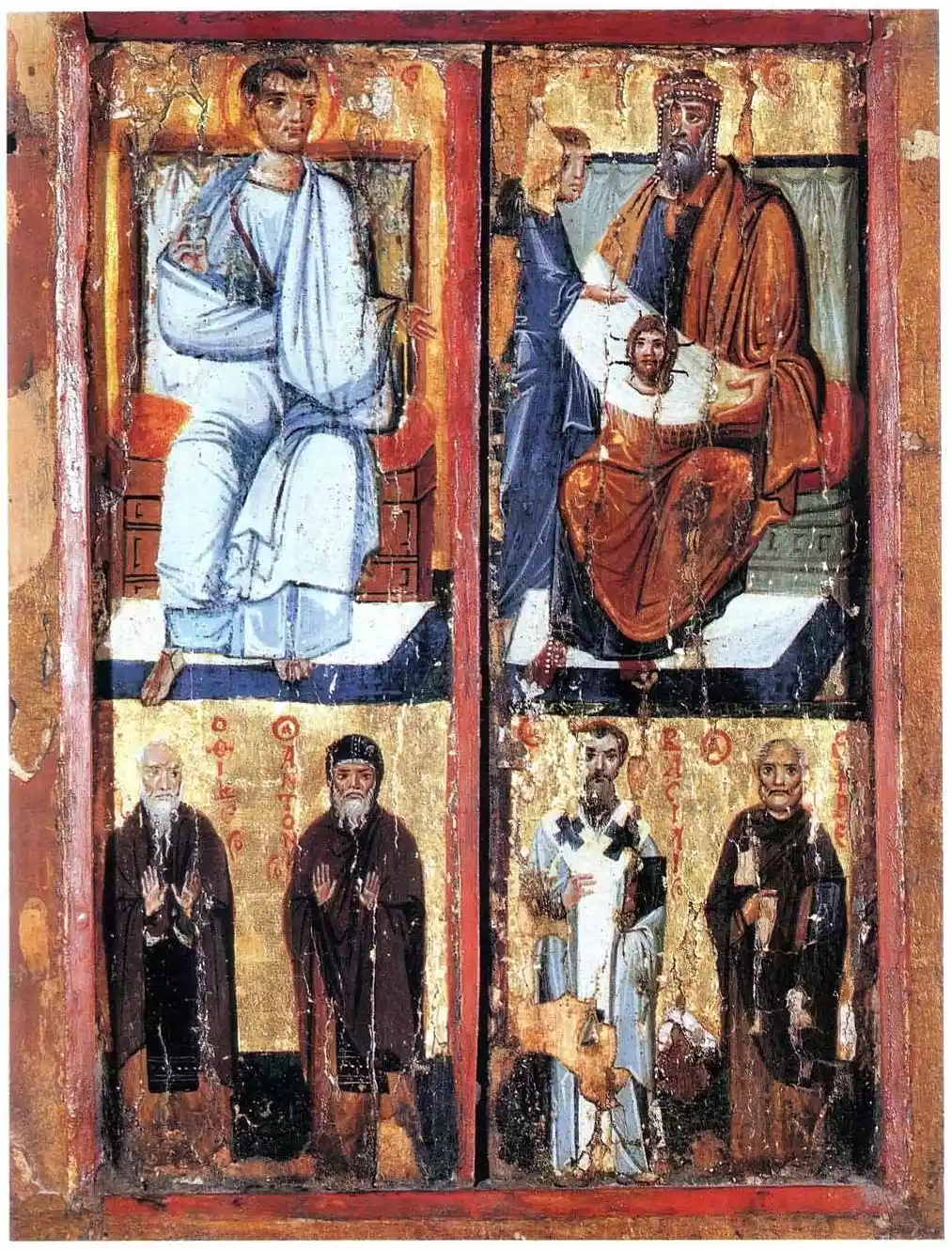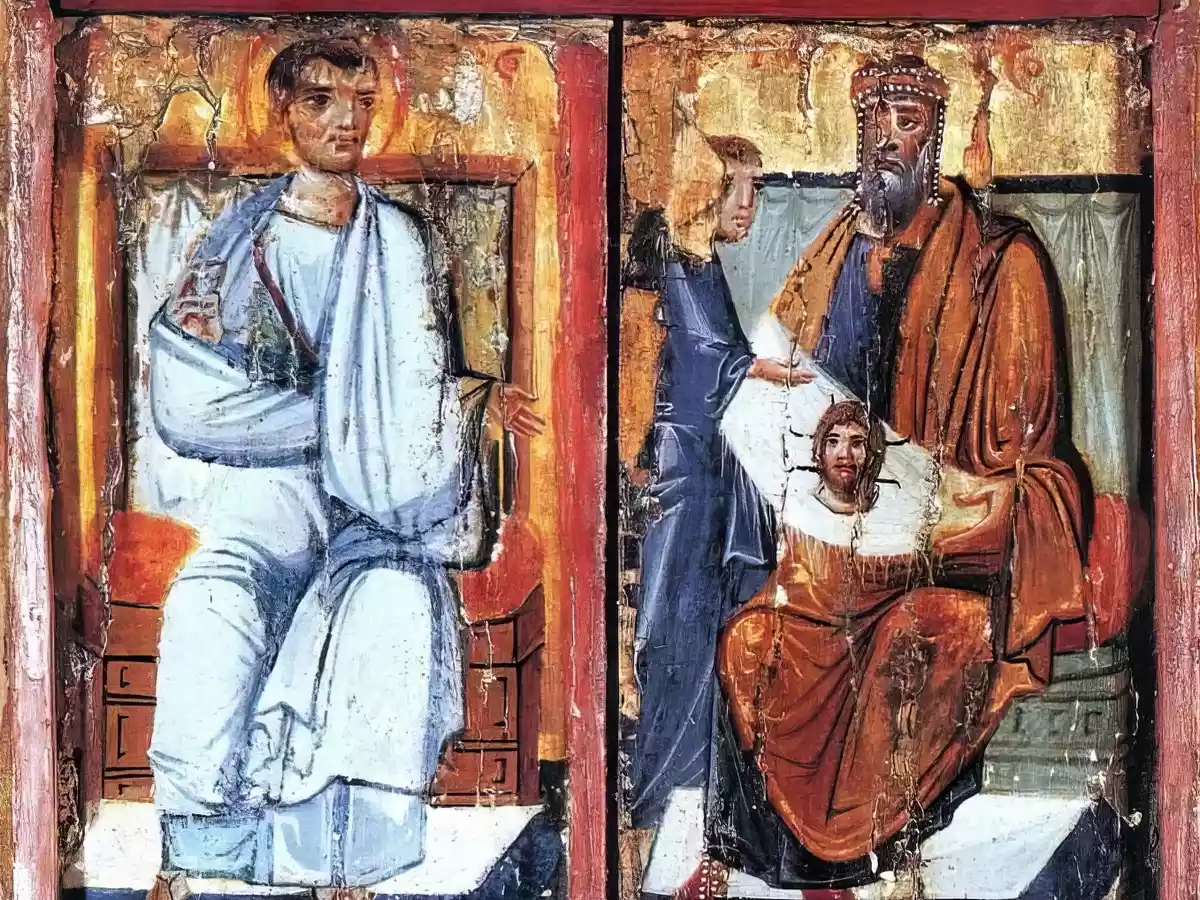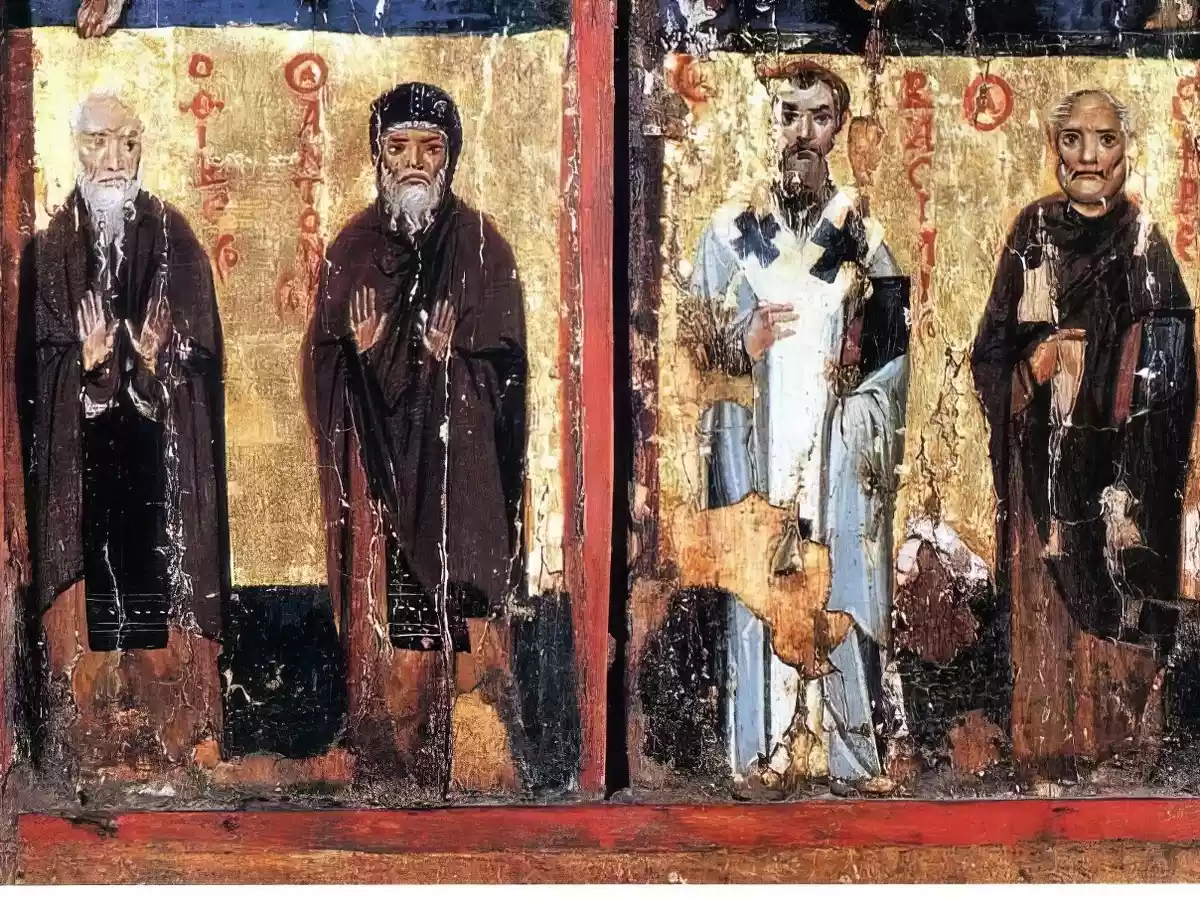
Before our eyes lie two wings of a triptych, from the Monastery of Sinai, which are dated to the middle of the tenth century. The central section, alas, has become vanished, but even these two surviving panels – which we now see – provide us a most valuable sample of the so-called Macedonian Renaissance. The painterly art, clearly classicising, shows the effort of the artisans of that time towards imitation of the ancient models, painted with egg tempera upon wood. Nevertheless our interest is not in the art alone, but much rather in the subject. This icon relates the myth concerning King Abgar and the reception of the Holy Mandylion, that cloth where the form of Christ was miraculously, as they say, imprinted. It is necessary indeed to examine this work not as a simple religious dedication, but as an historical document and political symbol, especially since it was created probably after the translation of this heirloom to Constantinople, in the 944th year.
The Narrative in Icons: Abgar, Thaddeus and the Ascetics.
The small panel, for each of the panels, is divided in two. Above is the main story, below is something else. This structure permits the artisan to combine two distinct levels of reality: the historical (or mythical) event above, and the spiritual basis below.
The upper zone: Political theology and the Acheiropoieton.
In the left wing we see the Apostle Thaddeus, seated, clothed in white garments just like some orator or philosopher of the ancient times. His posture is solemn and the manner classic, testifying to the artisan’s study concerning the ancients. And on the right is the scene of greater, perhaps, political significance. King Abgar – although being king of Edessa, here is clearly depicted as a Byzantine emperor, wearing a diadem and royal vestment – receives with reverence the holy cloth. He holds the Mandylion. And upon it, the form of Christ, the so-called Acheiropoietos [Made-Without-Hands] icon. And this is not concerning healing only, as the myth says. It is about a political declaration. Constantinople, after 944, possessing the Mandylion, projects herself as the guardian of the true, God-given icon, and the emperor becomes a new Abgar, the faithful ruler whom Christ Himself honoured. This icon, therefore, becomes an argument not only in favour of the veneration of icons – a matter most important after the Iconoclasm – but also in favour of the legitimacy of the royal authority.

The lower zone: The pillars of the faith.
Below then? What do we see below? Four forms of holy men, ascetics, stand before a golden background. These do not participate in the story above. They are themselves by themselves icons, symbols of the monastic state and of askesis. Their presence here is not accidental. They connect the historical event (the reception of the Mandylion) and its political significance (the king-Abgar) with the deeper spiritual tradition of the Church. These ascetics, the pillars of the faith, provide the foundation upon which the story of Abgar rests. The composition, as we see, is one wrought with much thought, combining the narrative, the political ideology and the spiritual tradition into one coherent work of art. This art, through its classicising form, bestows historical and eternal validation upon a narrative of capital importance for the Byzantium of the tenth century.

